HOLY TRINITYST.PHILIP'S BRISTOL |
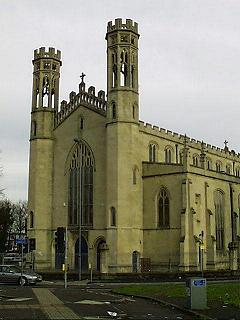 |
The parish of St. Philip & St Jacob was a huge one, and after the parish church of St.George was built in the C18, Holy Trinity was the first of many new churches built as the city of Bristol spread ever-eastwards. The architects responsible were Thomas Rickman and Henry Hutchinson of Birmingham, the church being built 1829-32. Rickman is the man responsible for naming the periods of English architecture, and the church is in the C15 style which he called Perpendicular. Its principle character is given by the pair of turrets flanking the west end of the nave, the tops with open tracery, as has the embattled parapet over the west gable and a large five-light window between them.
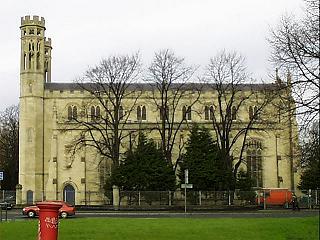 |
The side aisles stop just short of the turrets to the west and the sanctuary to the east. They have plain parapets and three-light side windows. The clerestory of the nave has a battlemented parapet which is also taken over the east gable. Crocketed pinnacles flank this east end which has a six-light window and low vestries to the east. | 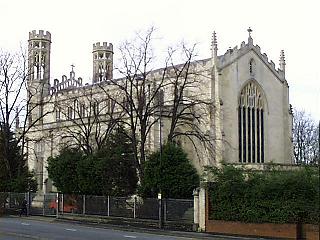 |
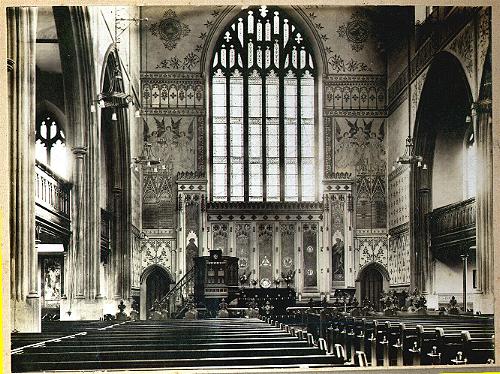 |
The interior is shown here
in an archive picture from the collection of Rev.
D.Cawley with his kind permission. Architecturally there
were few changes from the day it was built but the
stencilling and frecoes shown here must be later
Victorian. By the time the church closed all of this had
been whitened out with the exception of the reredos. The
Victorians would have disliked the galleries set back
behind the arcades and resting on small iron columns.
These were on three sides and curved at the west where
the organ case was built up in steps either side of the
west window. The ceiling was flat and panelled, and by
far the weakest part of the design. The church was closed in the 1970s and the church became a community centre. It continued to make the news because of the unsuitability of some of the rock groups that were set to perform there. The interior has been cruelly subdivided and a concrete floor inserted to make two floors. |
| One of the former
memorials can now be viewed in the foyer of Trinity Road
Police Station opposite the west end of the church on the
other side of the road. It commemorates P.C.Richard Hill
who was murdered in 1869 in Braggs Lane opposite the
church which leads down the short distance to St Jude's church. The church has been disused again since 2001, but new life as a Community Centre beckons again which should see the building back in full use by the Autumn of 2004. Watch developments at the Trinity Community Arts Website. |
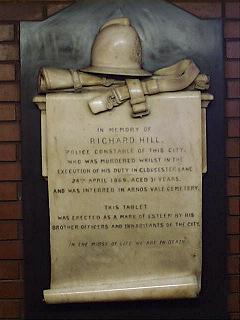 |
Back to Bristol churches Index